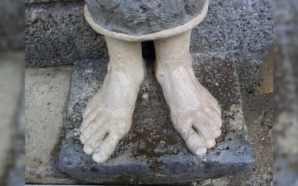In November 2017, over 130 people gathering for a liturgy conference planned by the Diocesan Liturgical Commission. The enthusiasm of those who attended and their interest in the way we worship God through the Catholic liturgy was there for all to see. Every Sunday (and for that matter every day) faithful men, women, young people and children gather in our parishes and schools to express their faith in the God of Jesus Christ through the liturgical forms that the Church has provided for us. Chiefly, it is the celebration of the Eucharist. Most readers of this article will know that after the Second Vatican Council (1962 – 1965) the liturgical of the Church underwent a substantial reform. As those who work in the liturgical arena often say, ‘whilst the reform is over, the renewal continues.’
We are never more public as Catholics as when we assemble to celebrate Mass. The Constitution on the Sacred Liturgy reminds us that the liturgy itself can and often is evangelising by its very nature. From time to time you meet people who are either of another Christian denomination, of another religion, or no religion, who will remark on the way in which the Catholic Church “does” liturgy and the profound affect it has on them which often they can’t explain. That is because our liturgical forms rely on a number of different elements in the offering of worship; liturgical communal prayer, the proclamation of Holy Scripture, the use of symbols, ceremonial action, and more often than not expressed through song.
So, is there an ongoing liturgical project for us in the Diocese of Parramatta? The answer to that is a definitive “yes”! If we had to highlight what remains to be achieved then the following would rank as being the most important:
- The Second Vatican Council called for those who participate in the liturgy to do so in a way that reflects their baptismal dignity in Christ. This means an assembly that is not passive in its engagement with the liturgy, but one which fosters “full, conscious and active participation.” (SC14)
- We must continue to resource those who both lead and minister in our celebrations. In our own workplaces we are used to “professional development” to keep us up to date and skilled for the occupations we have. The same applies to the liturgy. Clergy, acolytes, senior servers, readers, musicians all need the opportunity to refresh and renew their liturgical skills.
The Diocesan Liturgical Commission and through it the Office for Worship continually runs courses and engages with parishes to assist liturgical ministers to reflect and refine the way in which they engage with the liturgy. All liturgical ministers are called through the exercise of their roles to assist the assembly to pray more effectively.
Whilst the form of the liturgy we use does not change much given we use a ritual, we need to remember that every act of worship is unique in itself because it reflects a gathering of God’s people, in a unique place, at a unique time – an assembly which on the surface may constitute the same people, but is always different because our expression of faith is always changing and never remains static.
As we prepare ourselves for the great festival of Christmas let us always remember that it was because “the Word became flesh” that we are able to enter the immediacy of the mystery of God, because the God made known in Jesus Christ is ever present to us when “two or three” are gathered in his name.
By Very Rev Peter G Williams VG EV, Director Liturgy
This article first appeared in the December 2017 print edition of Catholic Outlook.
At the request of Most Rev Vincent Long OFM Conv, Bishop of Parramatta, Catholic Outlook was printed in December 2017 to connect the Diocese and showcase the good works across the Diocese’s many agencies and ministries.








